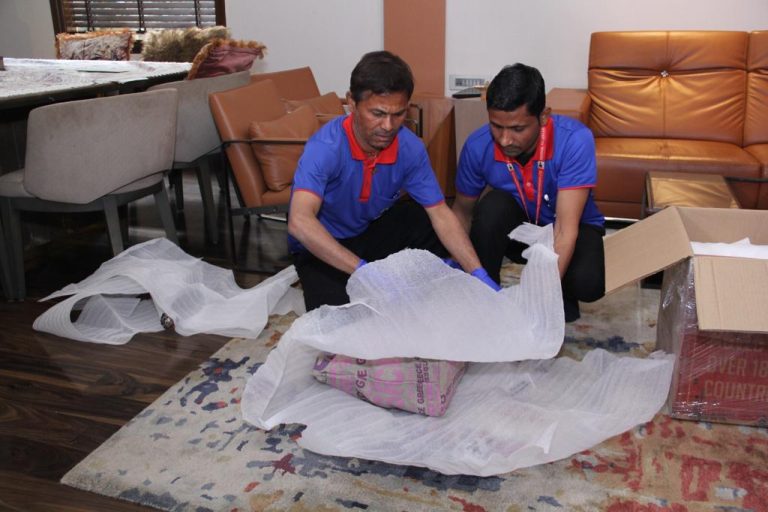Moving to a new home is an exciting and transformative experience. Whether you are relocating to a larger property, downsizing, or simply changing neighborhoods, the process of moving involves much more than just packing boxes and hauling furniture. It’s an opportunity to improve your new space, make it your own, and start fresh with a clean slate.
However, to ensure the move goes smoothly, and that your new home is set up efficiently and comfortably, you need to approach it with careful planning. A well-thought-out checklist and a clear strategy for moving day can make all the difference. Not only will this help reduce stress, but it will also allow you to settle into your new space without unnecessary delays or costly mistakes.
In this article, we’ll walk through how to improve your home using a checklist and how to manage moving day to make the entire process as seamless as possible.
1. Creating a Moving Checklist: The Key to a Smooth Transition
A moving checklist is your best friend when it comes to organizing tasks, managing time, and ensuring nothing gets overlooked. The key to making your new house feel like a home is thorough preparation, and this all begins long before moving day.
Step 1: Plan Ahead
The earlier you start preparing, the more time you’ll have to get everything organized. Ideally, you should begin your checklist at least four to six weeks before the move. This timeline will allow you to work through your tasks in an organized manner without rushing. A good plan will involve both pre-move and post-move preparations.
Pre-Move Checklist (4-6 weeks before moving day):
-
Sort and Declutter: Begin by going through each room and sorting out what you want to take with you and what you can donate or sell. Downsizing before a move not only reduces the cost of transportation but also helps you start fresh in your new space.
-
Find Moving Help or Rent a Truck: Whether you’re hiring a professional moving company or renting a truck for a DIY move, booking these services early will ensure availability and give you time to compare rates.
-
Create a Packing Plan: Develop a packing strategy based on what you’re taking with you. Start with items that you don’t need daily, such as seasonal clothing or out-of-season kitchen items.
-
Notify Relevant Parties: Ensure that utility companies, the post office, and any subscription services are informed of your change of address well in advance.
Step 2: The Final Countdown
The final two weeks before the move are critical. This is the time to start packing in earnest and prepare for the big day.
Two-Week Checklist (2 weeks before moving day):
-
Secure Packing Materials: Gather boxes, tape, bubble wrap, and packing paper. If you need specialty packing materials for fragile or valuable items, consider renting them from your moving company or purchasing them online.
-
Pack Non-Essential Items: Begin packing everything you can live without for the next couple of weeks. Items such as books, decorative pieces, and off-season clothing should be packed first.
-
Label Everything: It’s crucial to label each box with both its contents and the room it belongs to in your new home. Color-coding can further streamline the unpacking process.
Step 3: Moving Day Preparation
In the days leading up to the move, finalize any remaining tasks that will ensure moving day goes off without a hitch.
One-Week Checklist (1 week before moving day):
-
Confirm Details with Movers: Double-check your moving company or truck rental details. Confirm the time, location, and specific instructions for the moving crew.
-
Pack Essentials: Set aside a “moving day essentials” box with items like toiletries, chargers, snacks, and important documents that you’ll need immediately upon arrival at your new home.
-
Prepare Your Home: If necessary, clean your home or hire a cleaning service to ensure that it’s ready for the next owners or tenants. Take time to inspect your old home for any forgotten items.
2. How to Improve Your Home on Moving Day: Practical Tips
Moving day is a whirlwind, but with careful planning and the right approach, it can be a smooth process. Here are some practical tips to help you improve your home and make the most of your new space on moving day.
Step 1: Maximize the Efficiency of Your Move
The better organized you are on moving day, the more time and energy you will save. Here’s how to make the day go smoothly:
-
Start Early: Moving day begins early. Ensure that everyone knows when and where to meet, and try to get an early start to maximize daylight hours.
-
Create a Moving Day Plan: Organize the sequence of events. For instance, ensure that the furniture goes into the new home first, followed by boxes of heavier items, and lighter, more fragile boxes last.
-
Assign Tasks: Assign specific tasks to friends or family, such as supervising the movers, taking care of pets, or preparing meals for the team. Having a clear division of labor will keep things moving efficiently.
Step 2: Protect Your New Home
Even if your focus is on moving your belongings, it’s important to protect your new home during the transition. Here’s how:
-
Floor Protection: Lay down floor coverings in entryways and high-traffic areas to protect the floors from dirt, debris, and scratches.
-
Avoid Overloading: Ensure that heavy items are loaded properly into the truck to avoid damage to walls or furniture.
-
Check for Safety Hazards: Walk through the home before you begin unloading to check for any potential safety hazards, such as exposed wires, loose steps, or slippery floors.
Step 3: Unpack Strategically
When it comes time to unpack, being methodical and strategic will help you settle in more quickly and make your new space feel like home right away.
-
Start with the Essentials: The first boxes you should unpack are those containing essential items. Set up the kitchen, bathroom, and bedrooms first. This allows you to feel settled and have basic functionality while you work on the rest.
-
Tackle One Room at a Time: Focus on one room before moving to the next. This approach prevents clutter from piling up and makes the space easier to navigate. The living room, kitchen, and bathroom should be prioritized to ensure functionality.
-
Take Your Time: Unpacking doesn’t need to happen in a single day. By spreading it out over the course of a few days or even a week, you can take your time organizing and decorating your new home without feeling rushed.
3. Post-Move Checklist: Organize Your Home for Long-Term Comfort
Once the chaos of moving day has settled, the next step is ensuring your new home is comfortable, organized, and functional for the long term. Here’s how to improve your home post-move:
-
Set Up Systems: Once the basics are in place, take time to set up systems for organizing your belongings. Install shelving, storage units, and organizing tools as needed.
-
Personalize the Space: Unpack your decorative items and hang artwork to make the space feel uniquely yours. Arrange furniture in a way that maximizes space and creates a sense of flow in each room.
-
Deep Clean: After unpacking, give your new home a thorough cleaning. While you’ve likely cleaned your home before moving in, a deep clean ensures everything feels fresh.
-
Address Repairs or Improvements: Moving into a new home often brings the need for small repairs or updates. Whether it’s repainting a room, fixing a leaky faucet, or changing light fixtures, address these tasks to enhance the functionality and aesthetic of your new space.
4. Conclusion: A Well-Executed Plan Leads to a Seamless Transition
Improving your home during the moving process is about more than just organizing boxes; it’s about creating a space that reflects your needs and personal style. By starting early with a well-structured checklist and taking a methodical approach on moving day, you can reduce stress and ensure your new home feels welcoming and organized from the start.
Remember, moving is an investment in your future, and while it may seem overwhelming at first, a thoughtful strategy can help you create a space that not only works for you but also helps you start fresh with confidence. By approaching your move with the right checklist and practical strategies for the big day, you’ll transform your new house into the perfect home.















